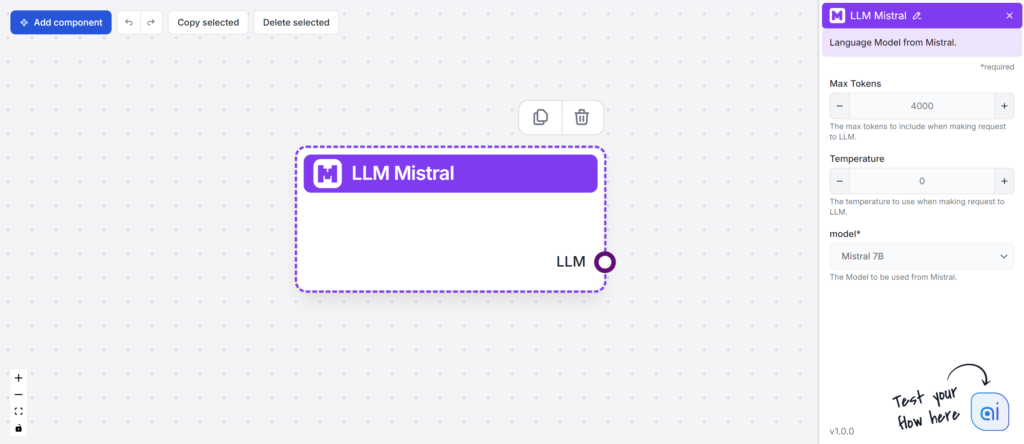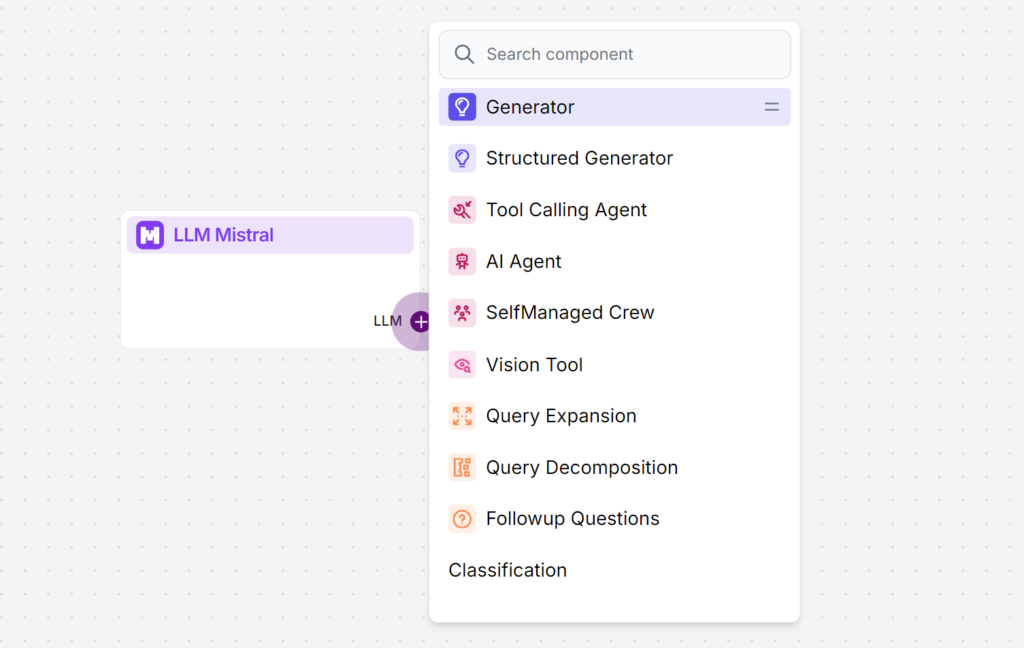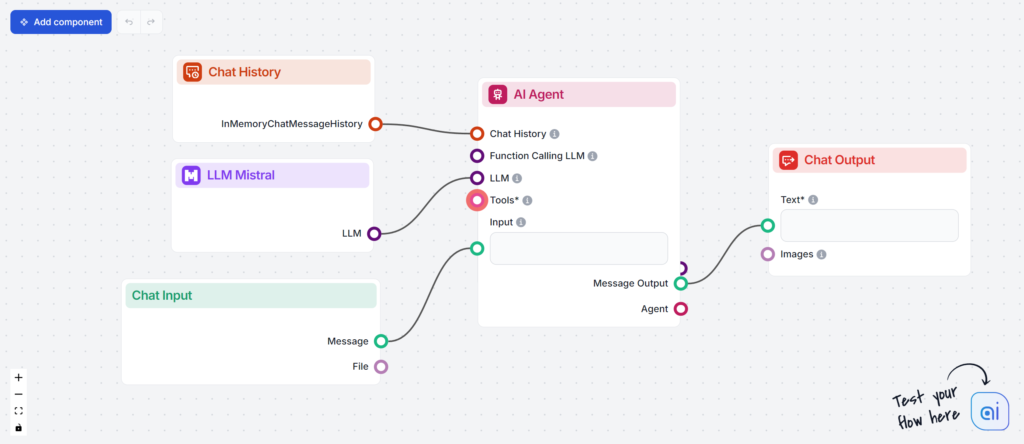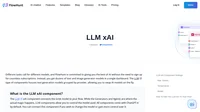Different tasks call for different models, and FlowHunt is committed to giving you the best of AI without the need to sign up for countless subscriptions. Instead, you get dozens of text and image generator models in a single dashboard. The LLM type of components houses text generation models grouped by provider, allowing you to swap AI models on the fly.
What is the LLM Mistral component?
The LLM Mistral component connects the Mistral models to your flow. While the Generators and Agents are where the actual magic happens, LLM components allow you to control the model used. All components come with ChatGPT-4 by default. You can connect this component if you wish to change the model or gain more control over it.

Remember that connecting an LLM Component is optional. All components that use an LLM come with ChatGPT-4o as the default. The LLM components allow you to change the model and control model settings.
LLM Mistral Component Settings
Max Tokens
Tokens represent the individual units of text the model processes and generates. Token usage varies with models, and a single token can be anything from words or subwords to a single character. Models are usually priced in millions of tokens.
The max tokens setting limits the total number of tokens that can be processed in a single interaction or request, ensuring the responses are generated within reasonable bounds. The default limit is 4,000 tokens, which is the optimal size for summarizing documents and several sources to generate an answer.
Temperature
Temperature controls the variability of answers, ranging from 0 to 1.
A temperature of 0.1 will make the responses very to the point but potentially repetitive and deficient.
A high temperature of 1 allows for maximum creativity in answers but creates the risk of irrelevant or even hallucinatory responses.
For example, the recommended temperature for a customer service bot is between 0.2 and 0.5. This level should keep the answers relevant and to the script while allowing for a natural response variation.
Model
This is the model picker. Here, you’ll find all the supported models from Mistral. We currently support the following models:
- Mistral 7B – A 7.3-billion-parameter language model utilizing the transformers architecture, released under the Apache 2.0 license. Despite being a smaller project, it routinely outperforms Meta’s Llama 2 model. Check out how well it did in our testing.
- Mistral 8x7B (Mixtral) – This model employs a sparse mixture of experts architecture, comprising eight distinct groups of “experts,” totaling 46.7 billion parameters. Each token utilizes up to 12.9 billion parameters, offering performance that matches or surpasses LLaMA 2 70B and GPT-3.5 on most benchmarks. See output examples.
- Mistral Large – A high-performance language model with 123 billion parameters and a context length of 128,000 tokens. It is fluent in multiple languages, including programming languages, and demonstrates competitive performance with models like LLaMA 3.1 405B, particularly in programming-related tasks. Learn more here.
How To Add The LLM Mistral To Your Flow
You’ll notice that all LLM components only have an output handle. Input doesn’t pass through the component, as it only represents the model, while the actual generation happens in AI Agents and Generators.
The LLM handle is always purple. The LLM input handle is found on any component that uses AI to generate text or process data. You can see the options by clicking the handle:

This allows you to create all sorts of tools. Let’s see the component in action. Here’s a simple AI Agent chatbot Flow that’s using the Mistral 7B model to generate responses. You can think of it as a basic Mistral chatbot.
This simple Chatbot Flow includes:
- Chat input: Represents the message a user sends in chat.
- Chat history: Ensures the chatbot can remember and factor in past responses.
- Chat output: Represent the chatbot’s final response.
- AI Agent: An autonomous AI agent that generates responses.
- LLM Mistral: The connection to Mistral’s text generation models.





